SAML 2.0 Integration
Onna offers Single Sign On (SSO) integration through SAML 2.0 (Secure Assertion Markup Language) with a variety of compliant identity providers, allowing you to leverage your existing user base and authentication mechanism to use the platform. There are only a few steps required to configure your Identity Provider (IdP) using the Onna Admin dashboard.
This guide walks you through setting up Onna as a Service Provider (SP). You will fill-in information about your Identity Provider (IdP), the external 3rd party which your users will sign-in through, and will return credentials back to Onna in the form of a SAML assertion. On the other end, you will also need to configure your IdP to establish communication with the Onna SP. By default, provisioning is enabled for your account. The default role in Onna for users created by provisioning is ‘user’. In the event you wish to turn off provisioning for an account, please contact the Onna Support Team.
Once provisioning has been turned off, if a user has not been provisioned in Onna and attempts to use SSO identity to sign in, they will have no permissions until an Onna admin configures an Onna user for this identity.
To get started, open the Admin Preferences → Account → SAML with the proper administrator user:
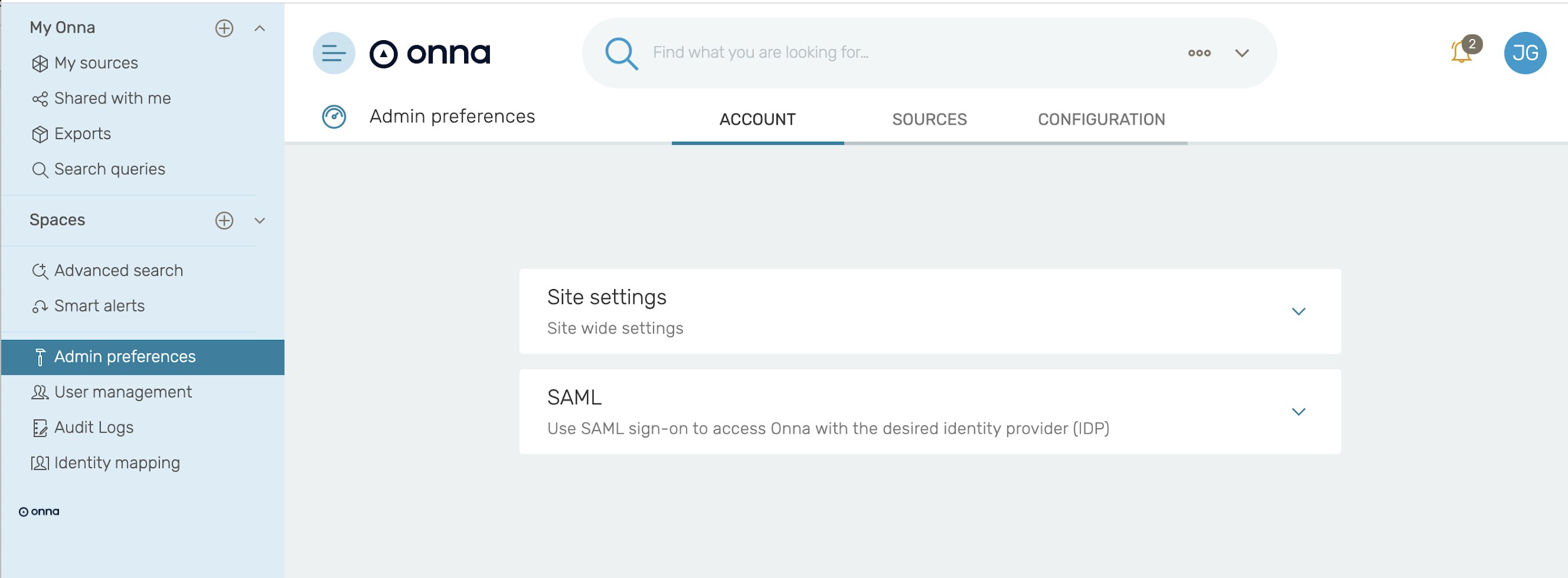
The following settings are configurable under the SAML section.
IdP ID / {IdPName}: Choose any name that you prefer to identify this Identity Provider (IdP). We’ll refer to this value as {IdPName} in the rest of the document.
This name will be displayed to the users in a selection box should you have more than one IdP. We suggest providing the ID in the following format:
youraccountname-identifyprovider
Example of how the IdP ID / IdPName should look: companyname-okta
IdP Issuer: The identity provider’s URL
SSO URL: The single sign-on URL of the SAML Identity Provider Login page that your users will be redirected to for logging in.
Certificate: The public x509 certificate of the SAML Identity Provider.
The next step is to configure your IdP so that it can establish communication with the Onna service provider. Below are the items that need to be configured. There are only a few items you need to fill in with the main ones shown below.
Onna Audience Restriction URL
https://enterprise.onna.com/auth/oauth/saml/metadata?idpId={IdPNam e}
{IdPName} needs to be replaced with the name you chose to identify your IdP (see page 2 for more information)
Onna SAML Assertion Consumer Service
https://enterprise.onna.com/auth/oauth/saml/?acs
Name id format
The required nameid format is "urn:oasis:names:tc:SAML:1.1:nameid-format:emailAddress", so an email address is needed to identify the user in the system.
The email address must match exactly to the case for the user’s authentication to work. If the user was created in Onna with an all lowercase email, the id sent from your identity manager must also be lowercase. In Okta, you can use this expression, such as String.toLowerCase(user.email).
All attributes listed below are required to complete the SAML configuration with Onna.
user_id : email address
sn: last name
cn: first Name
email: email address
Enabling Sign in through IdP
In order to use an Okta ‘chiclet’ or similar solution, you must provide a value for Default Relay State.
Default Relay State:
https://enterprise.onna.com/{youraccount}/signin?idpId={IdPName}&sco pes={youraccount}
{youraccount} needs to be replaced by the account name in your Onna URL.
{IdPName} needs to be replaced with the name you chose to identify your IdP (see page 2 for more information)
Setting up PingOne
Here is a sample workflow using PingOne as an Identity Management tool.
To get started, log in to Ping Identity and navigate to Applications. Click on Add Application and select New SAML application.
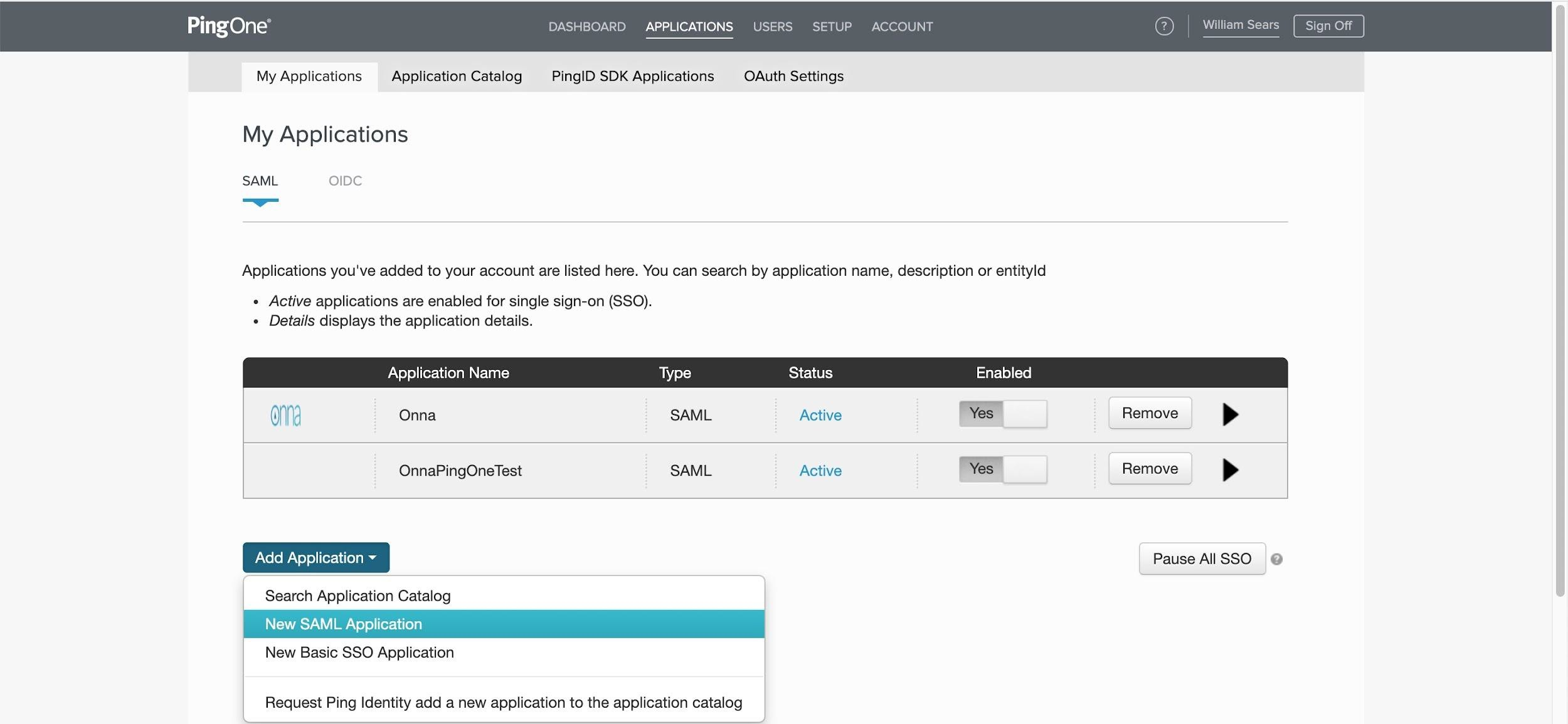
Provide a name for the new application and upload the provided Onna logo.
Click Continue to Next Step once values for the required fields have been provided.
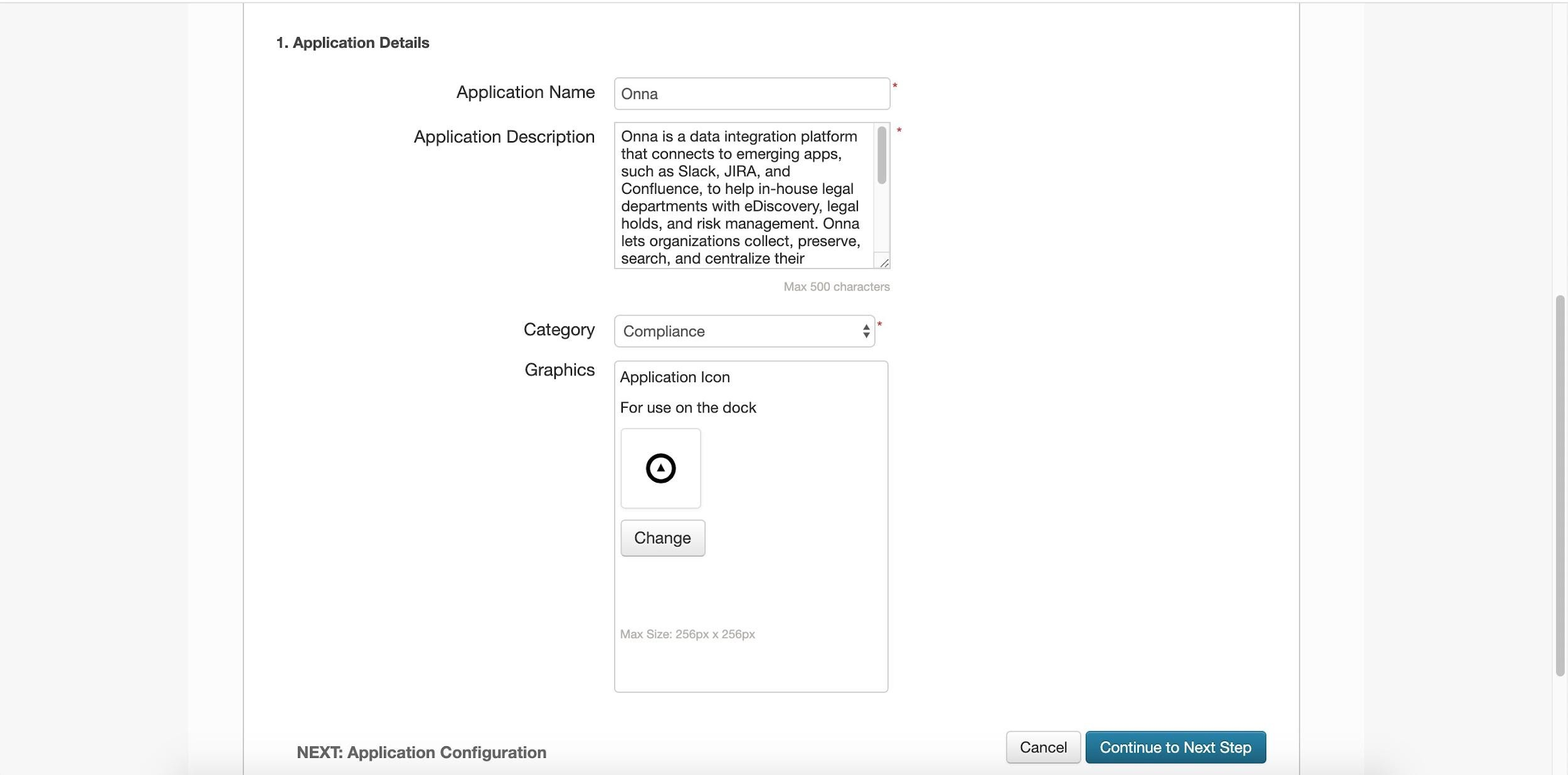
Open a new tab with the Onna application. With the proper administrator user, open Admin Preferences → Account → SAML. Set a new IDP ID in Onna and take note of the ID used. Do not complete the remaining parameters in Onna since we will provide the values later on.
Navigate back to PingOne and within the recently created SAML app in PingOne, there are only a few items you need to fill in with the main ones shown below.
Entity ID: https://enterprise.onna.com/auth/oauth/saml/metadata?idpId={IdPName}
{IdPName} needs to be replaced with the name you chose to identify your IdP
Application URL: https://enterprise.onna.com/{youraccount}/signin?idpId={IdPName}&scopes={ youraccount}
{youraccount} needs to be replaced by the account name in your Onna URL.
{IdPName} needs to be replaced with the name you chose to identify your IdP
Once the above has been completed, you can click Continue to the next step.
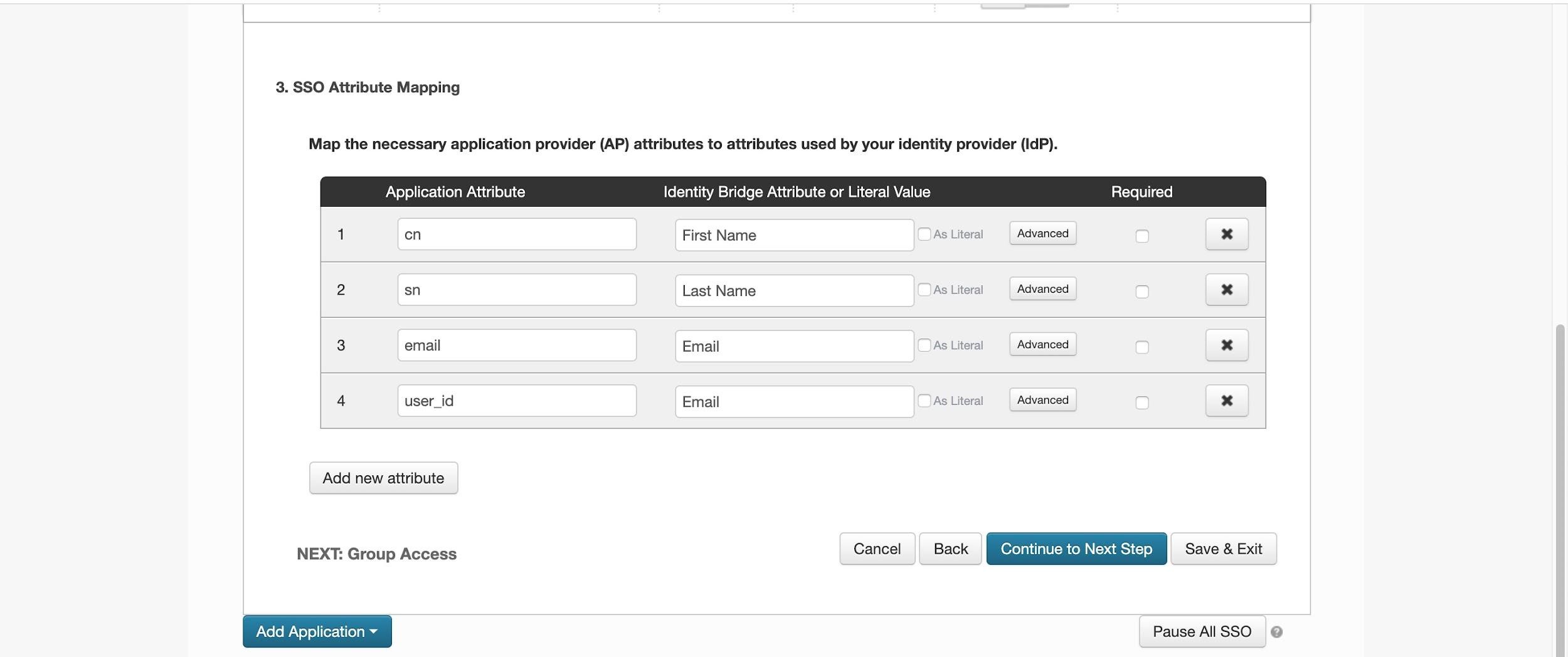
Only the attributes listed below are required to complete the SAML configuration with Onna.
user_id : email address
sn: last name
cn: first Name
email: email address
After you have added the required attributes, click Continue to Next Step. Here you will need to ensure the appropriate groups or users have been granted access to Onna. Click Add next to the group name to give the application access to the group.
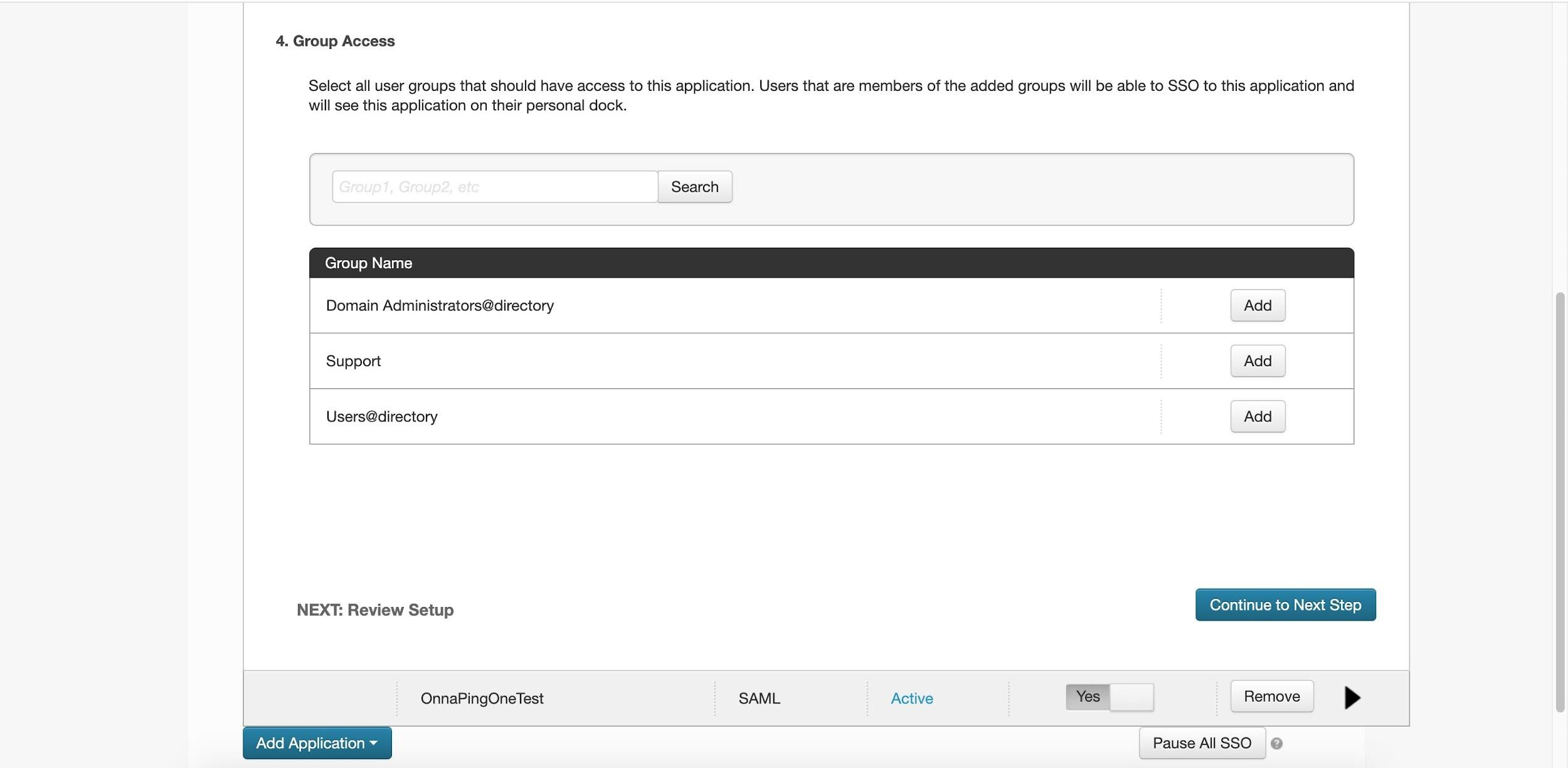
From the review setup page, you can use the values displayed below to fill in the missing parameters in Onna.
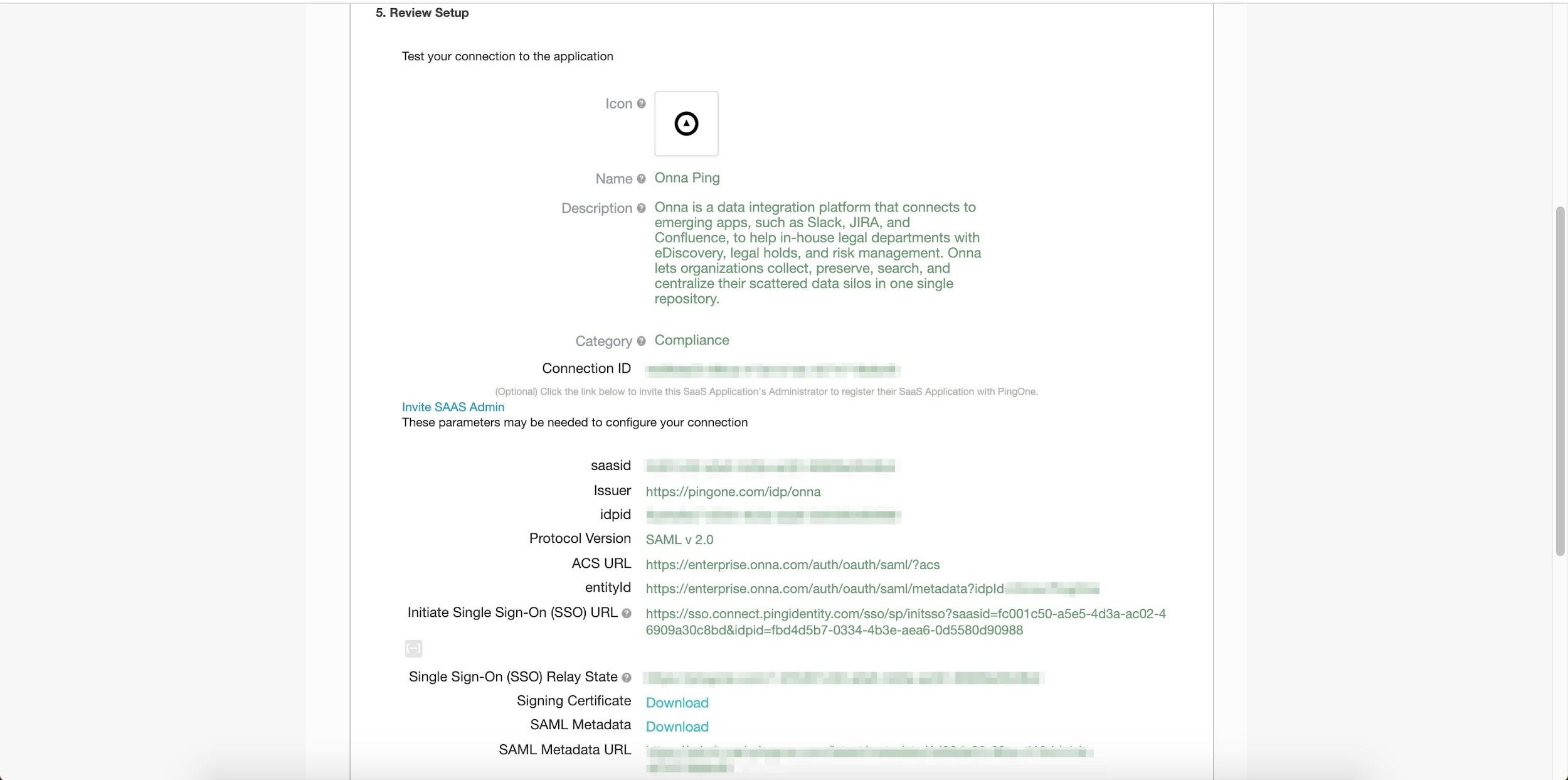
The issuer will be used for the IDP Issuer field in Onna.
Initiate Single Sign-On (SSO) URL will be used for the SSO URL field in Onna.
For SSO URL, replace the values:
sso/sp/initsso?saasid=fc001c50-a5e5-4d3a-ac02-46909a30c8bd&idpid= with
sso/idp/SSO.saml2?idpid=
The remaining part of the URL after idpid= should be left since it is still required. Below is an example of how the URL will look after you make the required changes :
Finally, download the Signing Certificate from PingOne and paste the contents of the certificate into Onna. Save the changes you have made for your Identity Provider.
Note:
Do not enable Allow to log in only with SSO until you verify you are able to log in via SSO.
In Onna, the completed configuration:
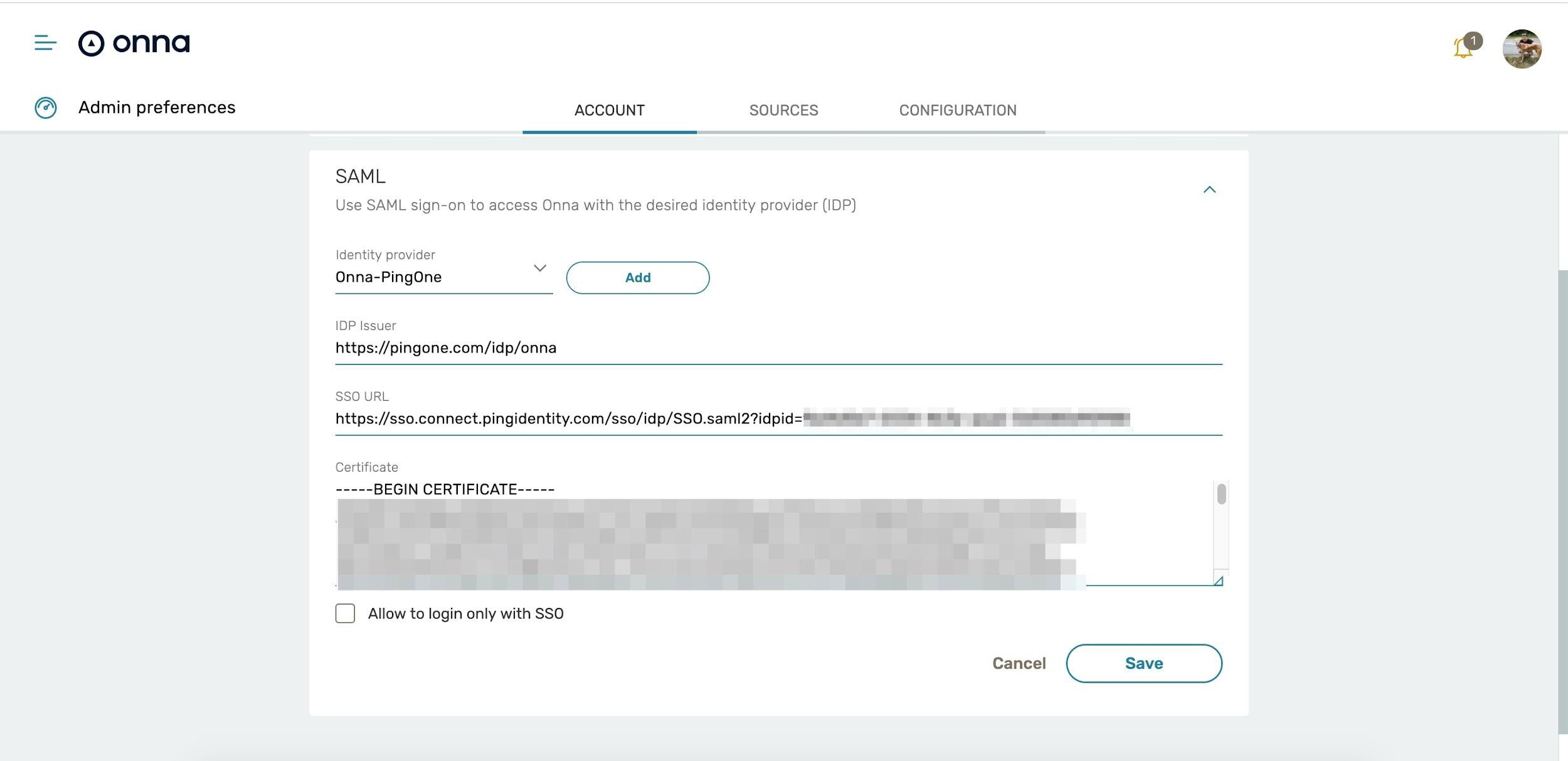
Delete SAML and SSO
You can delete your own SAML and SSO configuration in Onna from the Admin preferences.
To get started, open the Admin Preferences → Account → SAML with the proper administrator user.
Click on Identity Provider and from the dropdown select the configuration you would like to remove.
At the bottom of the screen, click Delete to permanently remove the SAML configuration in Onna.
